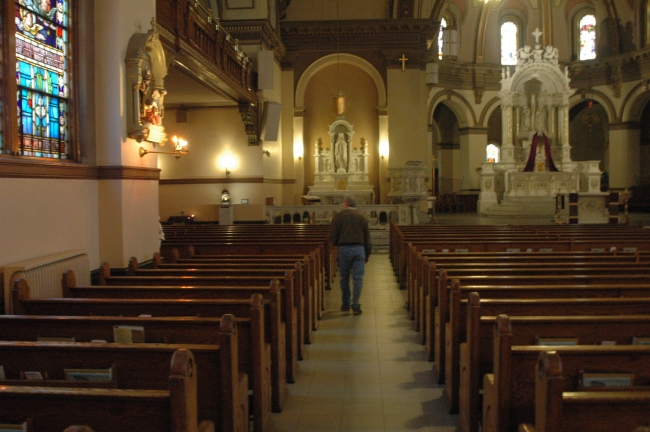Jesus Rocks The World: The Definitive History of Contemporary Christian Music, volumes 1 & 2, by Christian rock music historian Bob Gersztyn is an amazing story. It begins with the counter culture hippies of the 1960’s merging their psychedelic visions with their straight laced church going counterparts to create what came to be called, “The Jesus Movement,” which gave birth to Jesus rock. It tells the story of how Jesus rock became CCM, which expressed different manifestations of Christianity through rock & roll. Some of its artists, like Bob Dylan and U2 perfected the genre and made it mainstream. It also tells the story of how Jesus rock revitalized the dead Protestant church in America and Western Europe during the 1960’s and ultimately impacted Western pop music through the previously mentioned artists and hundreds of others. It is the story of how Western Civilization packaged and disseminated it’s ideological, philosophical and spiritual ideals to closed and adversarial societies, including the former Soviet Union, its Eastern European Communist satellite states and the current Islamic Jihadist states.
https://products.abc-clio.com/abc-cliocorporate/product.aspx?pc=C5805C
What people are saying about “Jesus Rocks The World:”
“Bob Gersztyn’s history of Jesus Rocks the World is a welcome addition to the very slim canon of serious histories on contemporary Christian music. In addition to his thorough research, Bob’s interviews and photography skills make this a special project, one that scholars and fans alike will find valuable in the years to come.”
—Robert Darden, Associate Professor, Journalism, Public Relations and New Media, Baylor University
“The history of contemporary Christian music has its roots in the earliest days of rock ’n’ roll, when pioneers such as Elvis Presley, Jerry Lee Lewis, Little Richard, and many others funneled the euphoria of the black Pentecostal worship service into their music and performances. The ‘Jesus Music’ of the early 1970s and subsequent ‘contemporary Christian music’ of the 1980s and onward continues the lineage where rock music and Christian spirituality have combined. And Bob Gersztyn has done a masterful job of documenting this much neglected lines of the rock ’n’ roll ancestry in his work.”—David Di Sabatino is an Emmy-nominated documentarian whose film Frisbee: The Life and Death of a Hippie Preacher played on PBS and received critical acclaim. He is also the compiler of The Jesus People Movement: An Annotated Bibliography and General Resource.
“It is wonderful to read such a thorough and insightful book on the subject. I am captivated by Bob Gersztyn’s account of so many people whose stories wove together to change hearts forever. But I was truly impressed at the lengths to which he was willing to go to look into the face of God’s work through Christian music and follow the story wherever it went—even to me.”—Marsha Stevens-Pino, Founding Member of Pioneer Jesus group Children of the Day and BALM Ministries.
“Bob Gersztyn has written the history of a counterculture to the 60s counterculture where the spirit of the time met the Holy Spirit and the rock of the age was transformed by the Rock of Ages.”
—Don Cusic, Professor of Music Business, Belmont University, Nashville, TN
“Jesus Rocks and Gersztyn Rolls Out the True Jelly Donut of the Soul.”—Hugh Romney a.k.a Wavy Gravy, Poet, Humanitarian, Peace & Personal Empowerment Activist, Woodstock MC and Author of Something Good For A Change.
“While I’ve dismissed Contemporary Christian Music (CCM) as Christian cheese, Robert Louis Gersztyn convinced me to give this musical genre another look-see. Through his photos and commentary, I found myself transported back to the sixties for a front row seat to witness the growth of this worldwide cultural phenomenon.”—Becky Garrison, Author of Jesus Died for This?
Biography
Rev Bob Gersztyn served as an inner city pastor in North East Los Angeles, California, during the 1970’s when he was part of the Jesus movement and the music that it produced. Over the proceeding decades he worked as a freelance photographer and journalist documenting both secular and Christian pop music for major music and religion publications, like Blues Revue , Guitar Player, LIVE and the Wittenburg Door magazines. His photographs, articles and interviews dealing with the connection between music and religion have been published in dozens of periodicals, ezines and books. “Jesus Rocks The World: The Definitive History of Contemporary Christian Music, volumes 1 & 2,” is the crowning work of over forty years of research, that involved the documentation of the spiritual side of rock & roll. It is the story of how both the Protestant and Roman Catholic Churches took advantage of the new genre of rock & roll to revitalize and reinvent themselves for a new generation of worshippers.
https://products.abc-clio.com/abc-cliocorporate/product.aspx?pc=C5805C
Contact Bob Gersztyn for more information and scheduling at:
Phone: (503)363-0404
Email: bobgersztyn@gmail.com























